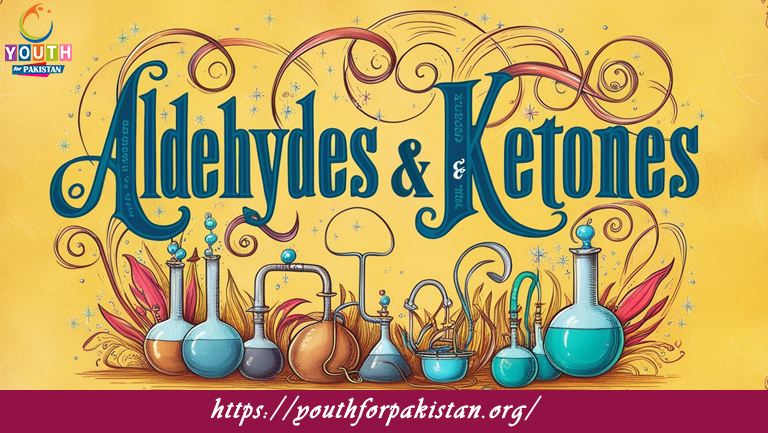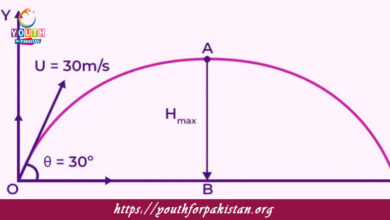Aldehydes & Ketones MDCAT MCQs with Answers

Welcome to the Aldehydes & Ketones MDCAT MCQs with Answers. In this post, we have shared Aldehydes & Ketones Multiple Choice Questions and Answers for PMC MDCAT 2024. Each question in MDCAT Chemistry offers a chance to enhance your knowledge regarding Aldehydes & Ketones MCQs in this MDCAT Online Test.
Which of the following is a ketone?
a) Methanal
b) Ethanal
c) Propanone
d) Butanal
The general formula for ketones is:
a) CnH2nO
b) CnH2n+2O
c) CnH2nO2
d) CnH2nO
The product of the oxidation of primary alcohols is:
a) Aldehyde
b) Ketone
c) Carboxylic acid
d) Ester
Which reagent is used to test for aldehydes?
a) Tollens’ reagent
b) Fehling’s solution
c) Both a and b
d) Neither a nor b
The IUPAC name of the simplest aldehyde is:
a) Methanal
b) Ethanal
c) Propanone
d) Butanone
Which of the following is used to prepare ketones by oxidation?
a) Secondary alcohol
b) Primary alcohol
c) Aldehyde
d) Carboxylic acid
The reaction of aldehydes with sodium bisulfite gives:
a) A salt
b) An alcohol
c) A ketone
d) An ester
The IUPAC name of CH₃CHO is:
a) Methanal
b) Ethanal
c) Propanone
d) Butanone
The reaction of ketones with 2,4-dinitrophenylhydrazine (DNPH) produces:
a) An alcohol
b) A ketone
c) A hydrazone
d) A carboxylic acid
The main product obtained from the reduction of an aldehyde is:
a) Carboxylic acid
b) Alcohol
c) Ketone
d) Ester
What is the product when an aldehyde reacts with a Grignard reagent followed by hydrolysis?
a) Alcohol
b) Carboxylic acid
c) Ketone
d) Ester
The name of the reaction in which aldehydes are oxidized to carboxylic acids using potassium permanganate is:
a) Friedel-Crafts reaction
b) Oxidation reaction
c) Reduction reaction
d) Esterification reaction
Ketones are generally less reactive than aldehydes due to:
a) Steric hindrance
b) Electron density
c) Bond angle
d) Molecular weight
Which reagent is used to distinguish between aldehydes and ketones?
a) Tollens’ reagent
b) Sodium hydroxide
c) Sodium carbonate
d) Hydrochloric acid
The reaction of aldehydes with ammonia or its derivatives is known as:
a) Aldol condensation
b) Cannizzaro reaction
c) Schiff’s reaction
d) Friedel-Crafts reaction
The IUPAC name for CH₃COCH₃ is:
a) Propanone
b) Butanone
c) Acetone
d) Ethyl ketone
Which of the following does not react with sodium bisulfite?
a) Methanal
b) Ethanal
c) Propanone
d) Butanal
The reaction of ketones with hydroxylamine forms:
a) Oxime
b) Hydrazone
c) Dioxane
d) Ester
Which of the following is a common use for aldehydes in industry?
a) Solvents
b) Fragrances
c) Dyes
d) All of the above
The IUPAC name of CH₃CH₂CHO is:
a) Propanal
b) Butanal
c) Pentanal
d) Hexanal
Aldehydes generally react with which type of reagents?
a) Reducing agents
b) Oxidizing agents
c) Neutral agents
d) None of the above
The IUPAC name of CH₃C(O)CH₂CH₃ is:
a) 2-Butanone
b) 3-Butanone
c) 2-Pentanone
d) 3-Pentanone
Which of the following is true about ketones?
a) They have a carbonyl group bonded to two alkyl groups
b) They have a carbonyl group bonded to an alkyl and a hydrogen
c) They have a carbonyl group bonded to two hydrogens
d) They do not contain a carbonyl group
What is the IUPAC name of CH₃COOH?
a) Methanoic acid
b) Ethanoic acid
c) Propanoic acid
d) Butanoic acid
Which of the following is an example of a ketone?
a) Methanal
b) Acetone
c) Propanal
d) Butanal
The reaction of aldehydes with sodium hydroxide to form an alcohol is known as:
a) Aldol condensation
b) Cannizzaro reaction
c) Schiff’s reaction
d) Friedel-Crafts reaction
The IUPAC name of CH₃C(O)C₄H₉ is:
a) Methyl butyl ketone
b) Ethyl butyl ketone
c) Butyl methyl ketone
d) Propyl ketone
Which reagent is used to convert an aldehyde to a primary alcohol?
a) Sodium bisulfite
b) Sodium hydroxide
c) Lithium aluminium hydride
d) Hydrochloric acid
The product of the reaction of a ketone with a Grignard reagent followed by hydrolysis is:
a) A secondary alcohol
b) A primary alcohol
c) A tertiary alcohol
d) An aldehyde
What is the common name for ethanal?
a) Acetone
b) Acetaldehyde
c) Formic acid
d) Methanol
The product of the oxidation of secondary alcohols is:
a) Aldehyde
b) Ketone
c) Carboxylic acid
d) Ester
The IUPAC name of CH₃C(O)CH₃ is:
a) Propanone
b) Butanone
c) Acetone
d) Ethyl ketone
The reaction of an aldehyde with sodium borohydride produces:
a) A ketone
b) A carboxylic acid
c) A primary alcohol
d) An ester
The IUPAC name of CH₃COCH₂CH₃ is:
a) 2-Butanone
b) 3-Butanone
c) 2-Pentanone
d) 3-Pentanone
Which of the following will react with Tollens’ reagent?
a) Ketone
b) Aldehyde
c) Both a and b
d) Neither a nor b
The reaction of an aldehyde with hydrogen cyanide forms:
a) A cyanohydrin
b) An ester
c) A carboxylic acid
d) An alcohol
What is the IUPAC name of CH₃COOH?
a) Methanoic acid
b) Ethanoic acid
c) Propanoic acid
d) Butanoic acid
The IUPAC name of CH₃CH₂CHO is:
a) Propanal
b) Butanal
c) Pentanal
d) Hexanal
Which of the following is used to identify the presence of ketones?
a) Sodium hydroxide
b) Tollens’ reagent
c) Fehling’s solution
d) 2,4-DNPH
The IUPAC name of CH₃CH₂CH₂CHO is:
a) Butanal
b) Pentanal
c) Hexanal
d) Heptanal
If you are interested to enhance your knowledge regarding Physics, Chemistry, Computer, and Biology please click on the link of each category, you will be redirected to dedicated website for each category.




